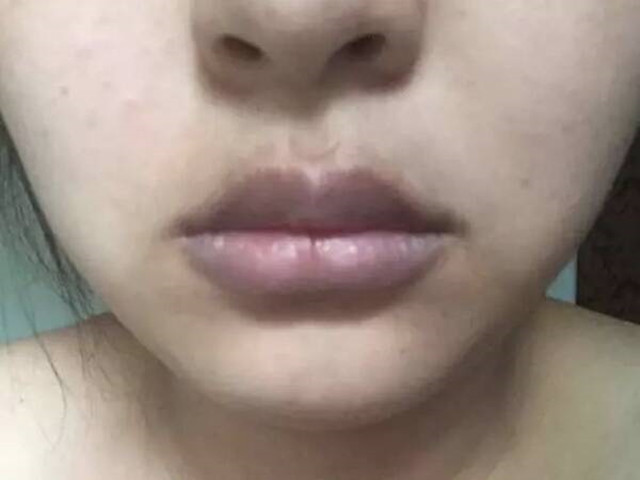
You look in the mirror and notice it—a dusky, purple, or bluish tint to your lips that doesn’t come from the cold and doesn’t go away. It’s easy to dismiss it as just your natural coloring or a sign of getting older. But when this discoloration is persistent, it’s often more than a cosmetic concern. If your lips always look purple or dark, it is a significant health signal that your blood is not carrying enough oxygen, a condition known as cyanosis.
This bluish-purple color is your body’s most visible way of sending a critical message about your circulatory and respiratory systems.
The “Why”: The Color of Oxygen-Depleted Blood
Think of your blood as a delivery truck. When it’s fully loaded with oxygen, it’s bright red, giving your skin and lips a healthy, pinkish hue. When the blood has delivered its oxygen to your body’s tissues and is returning to the heart and lungs, it’s darker, burgundy-red.
Cyanosis occurs when there’s too much of this oxygen-poor blood in your arteries near the skin’s surface. The light-absorbing properties of this deoxygenated blood create the visual effect of a blue or purple tint, which is most easily seen in thin-skinned areas like the lips, earlobes, and nail beds.
Decoding the Signal: What Could Be Causing the Low Oxygen?
Several underlying conditions can lead to this lack of oxygen, making it a symptom you should never ignore.
- A Heart or Lung Condition (The Most Common Cause):
- Chronic Obstructive Pulmonary Disease (COPD): Conditions like emphysema and chronic bronchitis damage the lungs, making it physically difficult to get enough oxygen into the bloodstream.
- Asthma: A severe or uncontrolled asthma attack can significantly restrict airflow.
- Heart Failure: A weakened heart may not be able to pump oxygenated blood effectively to the rest of the body.
- Congenital Heart Defects: Some heart problems present from birth can cause oxygen-rich and oxygen-poor blood to mix, lowering overall oxygen levels.
- A Blood Disorder:
- Methemoglobinemia: This is a rare blood disorder where the body produces an abnormal amount of methemoglobin, a form of hemoglobin that can’t carry oxygen effectively. This can be caused by certain medications, chemicals, or can be inherited.
- Environmental and Circulatory Causes:
- Extreme Cold: This is a temporary and normal cause. The cold causes blood vessels to constrict to preserve core body heat, reducing blood flow (and thus oxygen) to the extremities and lips.
- Raynaud’s Phenomenon: This condition causes exaggerated constriction of blood vessels in response to cold or stress, often affecting the fingers, toes, and sometimes the lips, turning them white, then blue, then red.
What Your Body is Urgently Asking You to Do
Persistent purple lips are not a “wait and see” symptom. Your body is showing you a visible sign of a potential internal crisis.
- Seek Immediate Medical Attention: This is non-negotiable. Schedule an appointment with your doctor promptly. If the discoloration appears suddenly and is accompanied by shortness of breath, chest pain, dizziness, or confusion, go to the emergency room.
- Describe All Your Symptoms: Be prepared to tell your doctor:
- How long your lips have had this color.
- If it’s constant or comes and goes.
- Any other symptoms, like fatigue, a persistent cough, swelling in your legs, or heart palpitations.
- Expect Diagnostic Tests: Your doctor will likely check the oxygen saturation in your blood with a simple, painless device called a pulse oximeter. They may also order blood tests, a chest X-ray, or an EKG to check your heart and lung function.
Your lips are a window to your circulatory health. That persistent purple or dark color is a direct, visual report that your body’s oxygen supply is compromised. By listening to this signal and acting quickly, you can get to the root of the problem, whether it’s managing a chronic lung condition or addressing a heart issue, and help restore the healthy, pink hue of well-oxygenated blood.